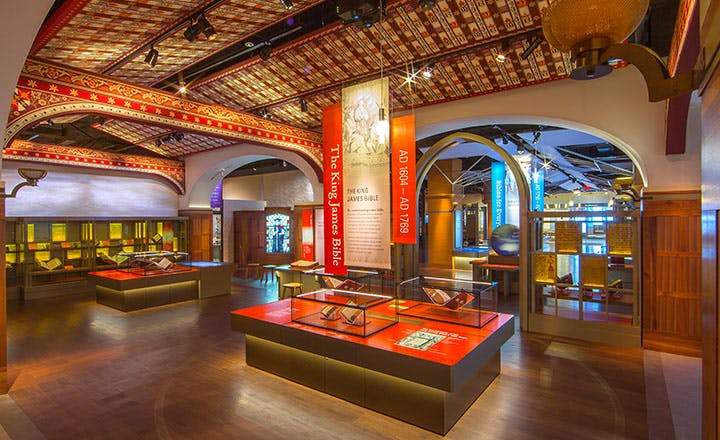The Museum of the Bible, or the Museum of the Bible in Washington, D.C., has returned some 5,000 ancient objects toEgypt following an affair that lasted several years, at least since 2016, when the museum dedicated to the sacred text of Judaism and Christianity opened: the Egyptian government in fact believed that the objects in the museum’s Egyptian collection were of illicit provenance, as they were put on the market by illegal excavations. These are very valuable items: there are papyri with Greek and Coptic texts, prayer manuscripts, sarcophagi fragments, stone statues, some portraits. The material will now reach the Coptic Museum in Cairo, the institution with the world’s largest and most important collection of Coptic art.
For the Museum of the Bible, which was opened to display entrepreneur Steve Green’s conspicuous collection to the public, this is not the first repatriation: already in 2017, in fact, the institute had been forced to return several objects to Iraq and Egypt itself, again because they were illegally sourced. And again, in 2020 the American institute was forced to acknowledge that its 16 fragments of the “Dead Sea manuscripts,” purchased between 2009 and 2014, were actually forgeries made in modern times. Today’s restitution is thus yet another grain to be added to the history of a museum with a troubled history since its opening, not least because the Green family’s collecting, at least in its early days, was never particularly concerned with the provenance of the objects: as a result, numerous controversies have arisen over the collection (in 2017 the Green family’s company, Hobby Lobby, settled a $3 million penalty to resolve a lawsuit in which it was accused of importing into the United States some cuneiform tablets that had illegally left Israel via the United Arab Emirates: the works were then, of course, returned).
In short, Steve Green’s collecting methods appear dubious, to say the least: the entrepreneur, who is also chairman of the board of the Museum of the Bible, has nevertheless intervened with a note of his own to clarify what is happening around the collection. “In March 2020,” Green writes, “I announced that the curators of the Museum of the Bible had patiently and painstakingly investigated the provenance of the thousands of items in the collection of biblical manuscripts and artwork that I began acquiring in 2009. I also announced that the research had revealed that several thousand objects originated in Iraq and Egypt, but that there was insufficient reliable information for them as to provenance, and therefore these objects would be returned to their countries of origin.” Green then recalled that in May 2020, 8,106 terracotta objects were returned to Iraq, and about 5,000 fragments of papyri and other objects to Egypt: in June, the objects were then transferred to specialized warehouses to prepare for transfer.
In the following months, Green noted, the museum continued discussions, begun in 2017, with Iraqi and Egyptian authorities to “establish mutually beneficial relations with the Iraq Museum in Baghdad and the Coptic Museum in Cairo. Discussions covered technical assistance programs, potential loans, and exhibitions that will allow us to learn more about each country’s cultural history. During discussions with Iraqi authorities, we learned that 3,800 objects that the U.S. government returned from our collection to Iraq in May 2018 were still in storage at the Iraqi Embassy in Washington. We offered to coordinate and pay for the transportation of these objects, along with the 8,106 terracotta objects to be returned to the Iraq Museum in Baghdad. We made a similar offer to Egypt.”
As for the 5,000 objects that are being talked about these days, Green said the museum has entrusted them to the U.S. government with the purpose of moving them to a storage facility equipped to prepare them for return to Egypt. And, Green says, “we have learned that the U.S. government has now turned them over to Egyptian authorities.” Finally, the transfer of the 8,106 terracotta objects to the Iraq Museum began on Jan. 27.
Green, who had already admitted his mistakes last year in an interview with the Wall Street Journal (“I know little about the world of collecting,” he had said, “and criticism of the museum because of my mistakes is justified), said he was willing to work together to continue to ”preserve and celebrate the rich cultural histories of these countries and so many others."
Pictured: the Museum of the Bible in Washington, D.C.
 |
| Washington, D.C., Museum of the Bible returns 5,000 ancient objects to Egypt |
Warning: the translation into English of the original Italian article was created using automatic tools. We undertake to review all articles, but we do not guarantee the total absence of inaccuracies in the translation due to the program. You can find the original by clicking on the ITA button. If you find any mistake,please contact us.